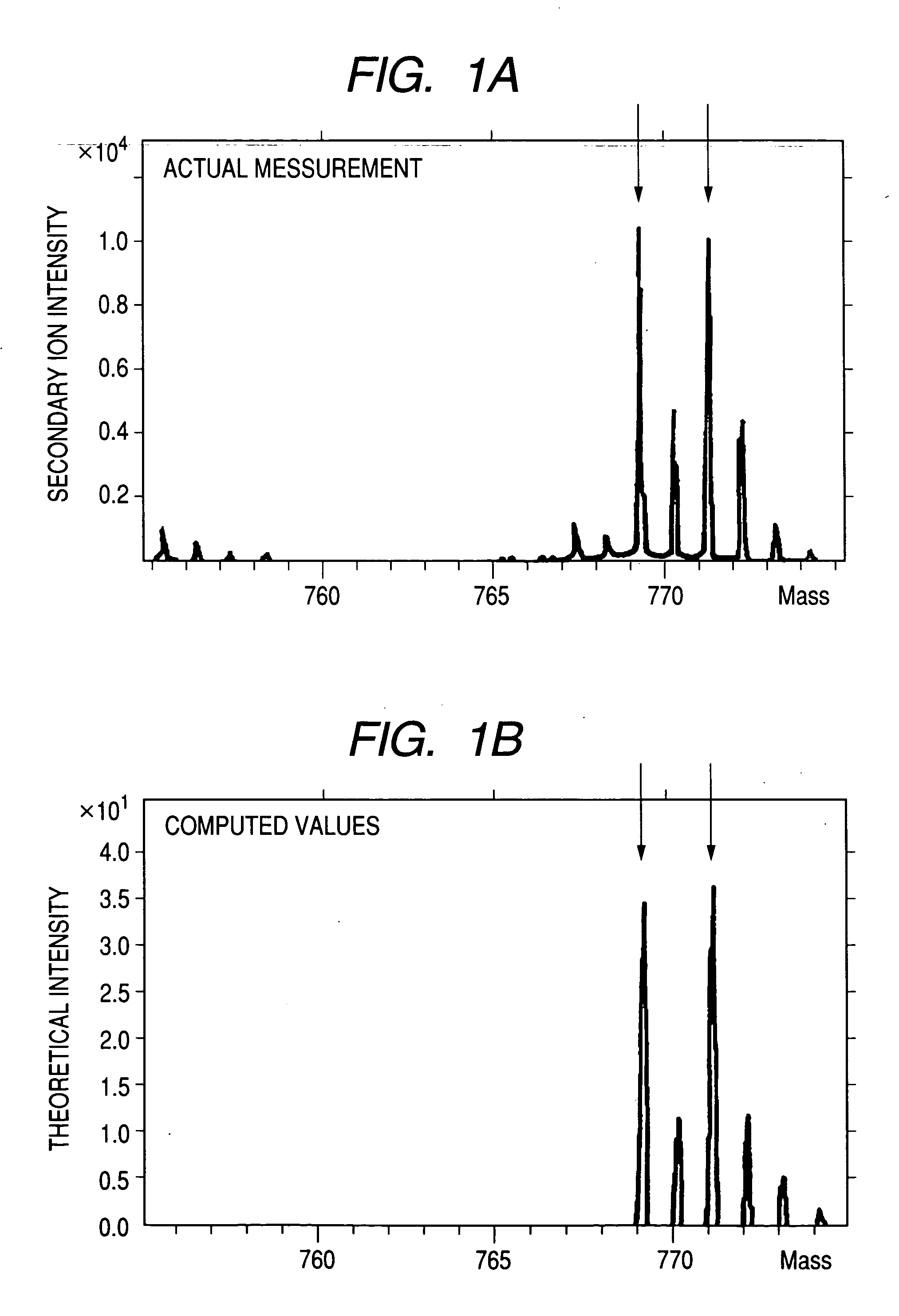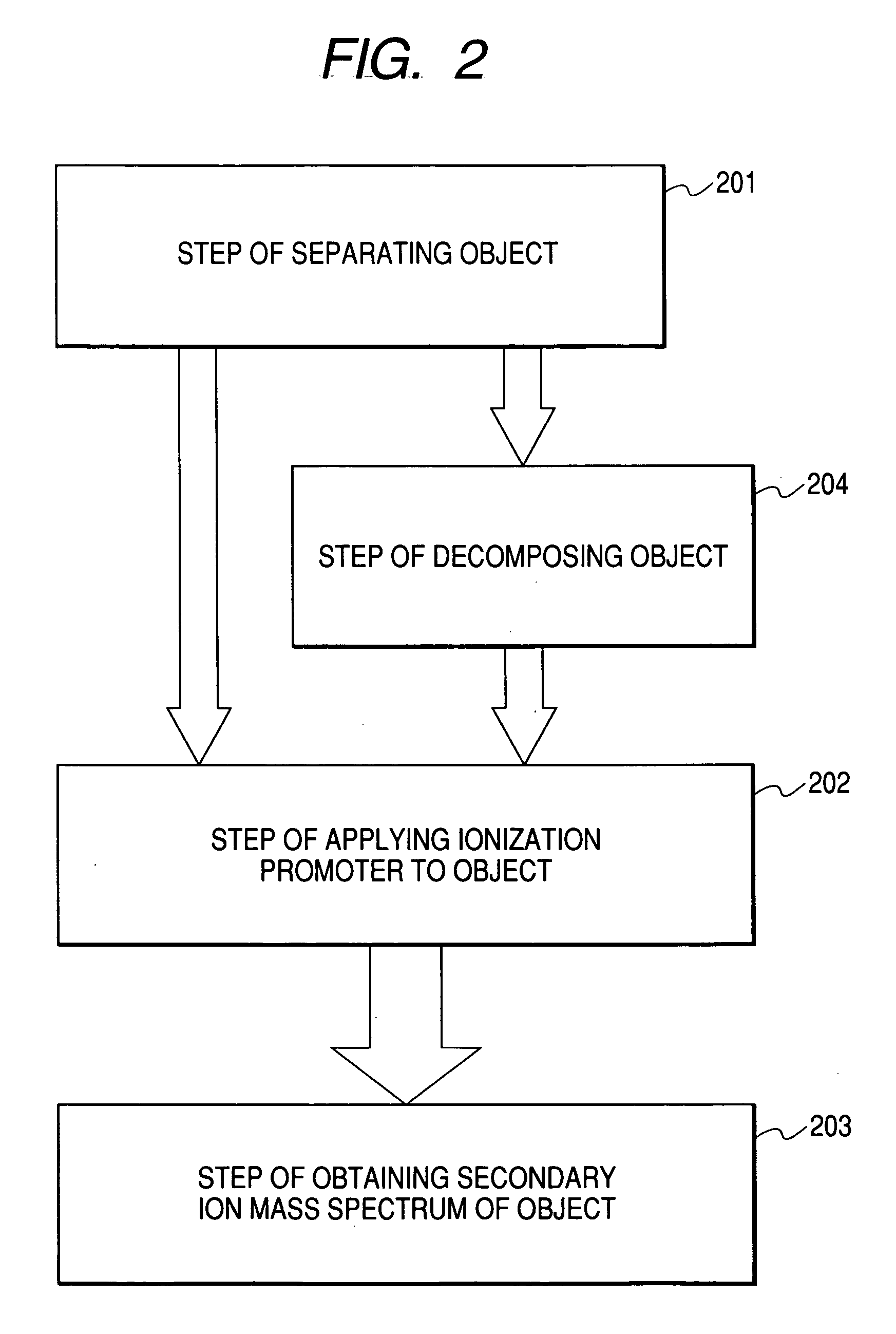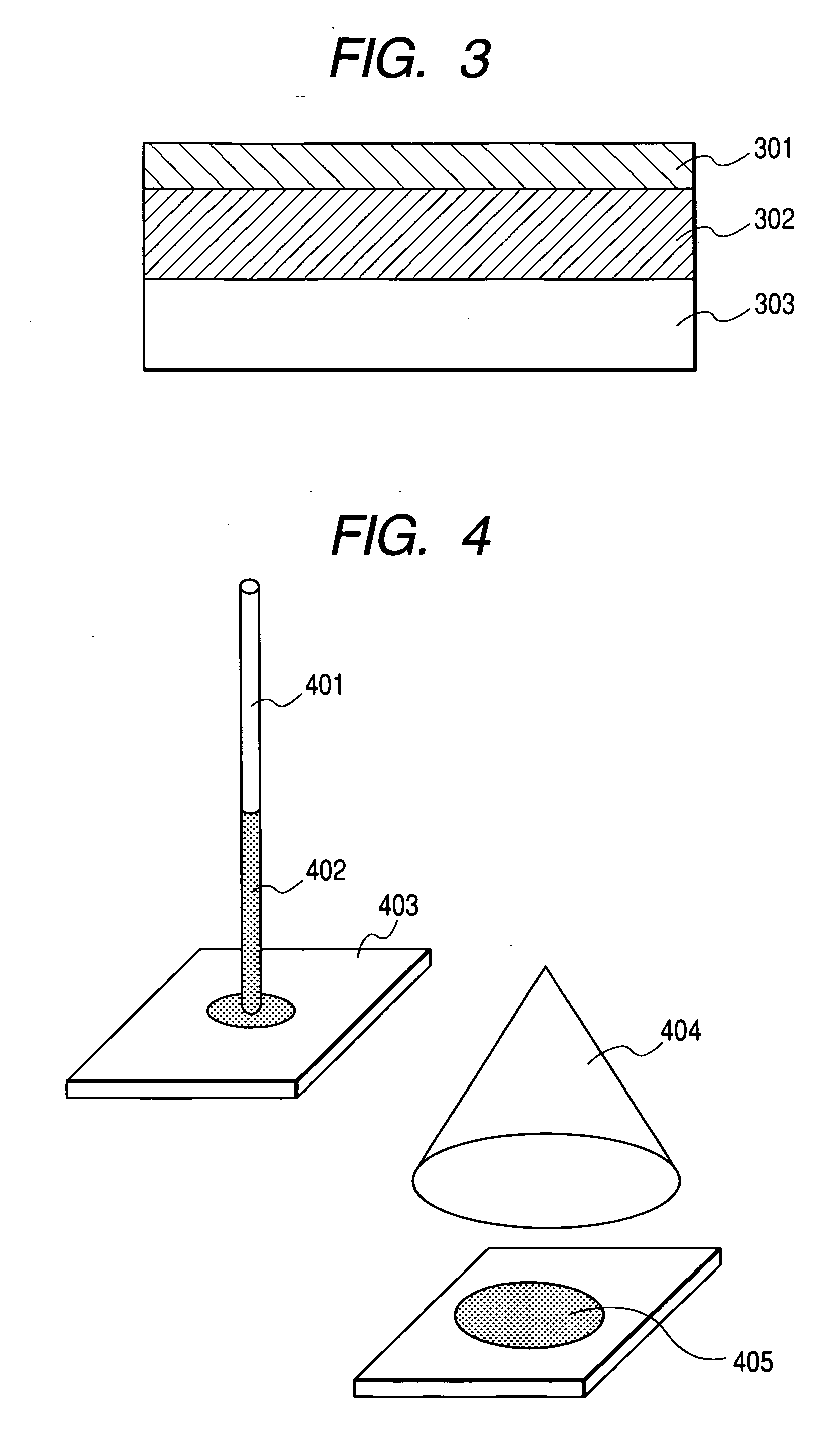Information acquisition method, information acquisition apparatus and sampling table for time of flight secondary ion mass spectroscopy
a secondary ion mass spectroscopy and information acquisition technology, applied in mass spectrometers, time-of-flight spectrometers, instruments, etc., can solve the problems of difficult laser beam scanning, complex movement of lens and mirror of observation system, and spatial resolution limitation, so as to accelerate the ionization of proteins and reduce manufacturing costs , the effect of high spatial resolution
- Summary
- Abstract
- Description
- Claims
- Application Information
AI Technical Summary
Benefits of technology
Problems solved by technology
Method used
Image
Examples
example 1
Preparation of a Plate for the Segregated Bio-Related Sample to be Analyzed (1)
[0085] A plate to be used for thin-layer chromatography (RP-18, tradename, available from Merck, film layer thickness: 0.2 mm) is cut to dimensions of 30 mm×5 mm and an Ag mono-atomic layer is formed on the plate by sputtering.
[0086] Then, a mixed aqueous solution containing 10 μM of each of synthesized peptide I (peptide arrangement: GGGGCGGGGG, C21H34N10O11S (average molecular weight: 634.61, the molecule weight of the molecule formed by elements showing the highest isotopic abundance ratios: 634.21, purchased from Sigmagenosis Japan) and synthesized peptide II (peptide arrangement: GGGGCEGGGG, C24H38N10O13S (average molecular weight: 706.79, the molecule weight of the molecule formed by elements showing the highest isotopic abundance ratios: 706.23, purchased from Sigmagenosis Japan) is prepared. The prepared aqueous solution is dropped by 10 μl onto a central part of the plate and extended by causi...
example 2
TOF-SIMS Analysis of the Samples Prepared in Example 1
[0087] The samples prepared in Example 1 are dried in air and then analyzed by means of a TOF-SIMS IV type apparatus (available from ION TOF). The measurement conditions are summarized below:
[0088] primary ions: 25 kV Ga+, 0.6 pA (pulse electric current value), random scan mode;
[0089] pulse frequency of primary ions: 2.5 kHz (400 μs / shot);
[0090] pulse width of primary ions: about 1 ns;
[0091] primary ion beam diameter: about 5 μm;
[0092] range of measurement: macro-raster (30 mm×5 mm); and
[0093] number of times of additions: 256.
[0094] When both the positive and negative secondary ion mass spectra are measured under the above conditions, it is possible to detect secondary ions that correspond to the mass of the synthesized peptide I, to whose parent molecule Ag is added along with a carbon atom and an oxygen atom, in the positive secondary ion mass spectrum. Similarly, it is possible to detect secondary ions that correspon...
example 3
Preparation of a Plate for the Segregated Bio-Related Sample to be Analyzed (2)
[0098] A plate to be used for thin-layer chromatography (RP-18, tradename, available from Merck, film layer thickness: 0.2 mm) is cut to dimensions of 30 mm×5 mm to prepare a plate for segregating the sample.
[0099] Then, a mixed aqueous solution containing 10 μM of each of synthesized peptide I and synthesized peptide II that is similar to Example 1 is prepared. The prepared aqueous solution is dropped by 10 μl onto a central part of the plate and extended by causing a 1:1 (volume ratio) solution of acetonitril containing trifluoroacetate by 0.1 vol % and distilled water to permeate the former aqueous solution by means of a glass capillary tube. A 10 μM silver nitrate aqueous solution is sprayed onto it until the surface of the plate becomes slightly wet. A plurality of such samples are prepared.
PUM
| Property | Measurement | Unit |
|---|---|---|
| diameter | aaaaa | aaaaa |
| diameter | aaaaa | aaaaa |
| frequency | aaaaa | aaaaa |
Abstract
Description
Claims
Application Information
 Login to View More
Login to View More - R&D
- Intellectual Property
- Life Sciences
- Materials
- Tech Scout
- Unparalleled Data Quality
- Higher Quality Content
- 60% Fewer Hallucinations
Browse by: Latest US Patents, China's latest patents, Technical Efficacy Thesaurus, Application Domain, Technology Topic, Popular Technical Reports.
© 2025 PatSnap. All rights reserved.Legal|Privacy policy|Modern Slavery Act Transparency Statement|Sitemap|About US| Contact US: help@patsnap.com



